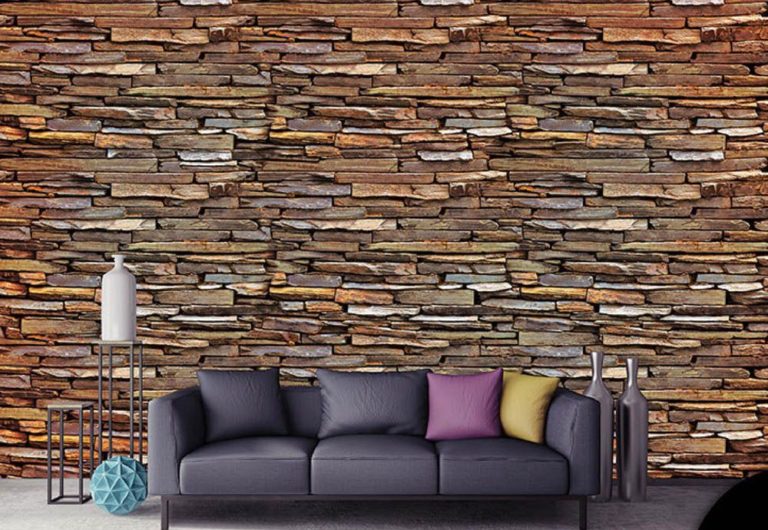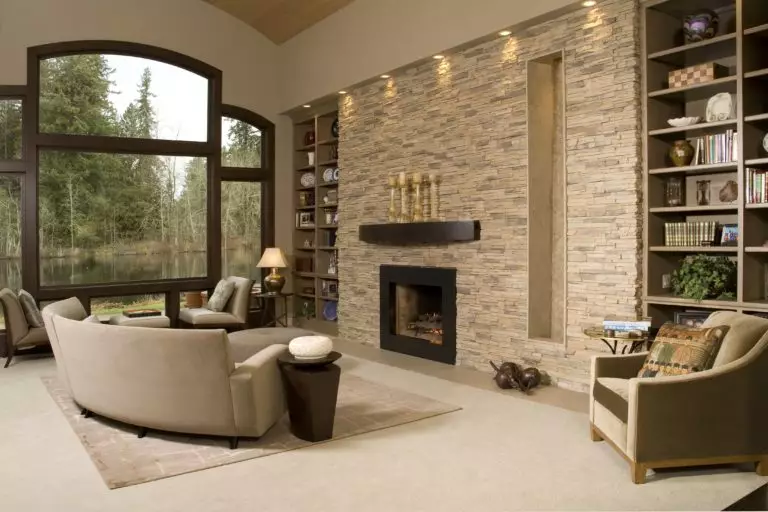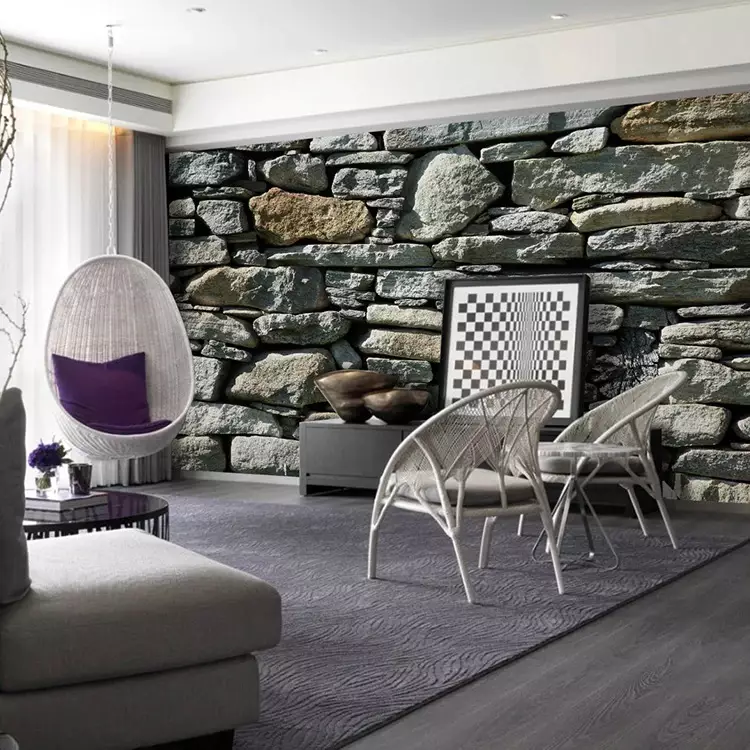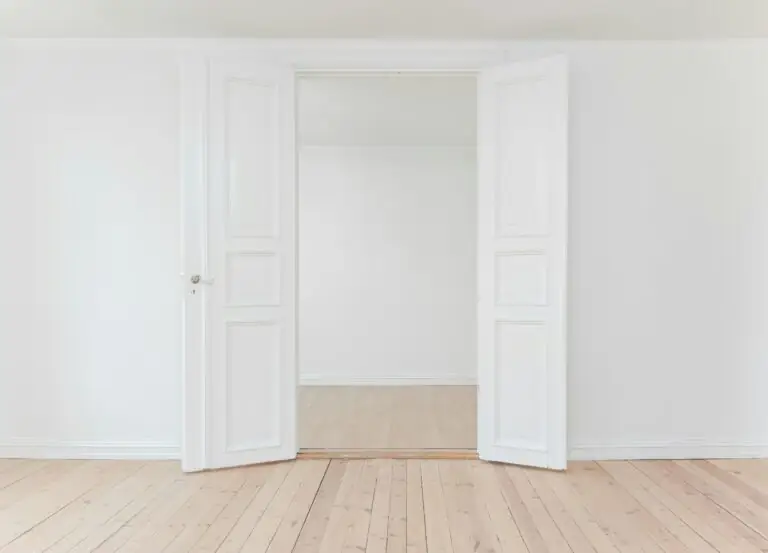Natural stone for walls: a sophisticated solution for the interior

Each piece of stone is unique – we won’t find two with the same pattern. Besides, natural stone is a durable and resistant material that suits any type and style of interior. Depending on the finish, it can add a modern style or rustic feel to the interior.
Which natural stone to choose – types of stone
Everything is simple for walls: you can choose any type of stone, even one that is not suitable for the floor. For example, granite, alabaster, quartzite, porphyry, slate, basalt, or marble are right. You can also choose delicate varieties such as sandstone, travertine, onyx, and limestone.
You can choose by color. The stone strikes with a variety of textures, shades, veins, and patterns. You can match it to any decor – from rustic to modern. The way the stone is processed also affects beauty, color, and practicality.
Stone for the wall – grades, types, and properties
Like tiles or floorboards, stone can also be of several types. The first grade is flawless products with perfect coloration. In the second case, slight discoloration or cavity may appear, and in the third, damage to the stone.
The grades of the stone, marked with the letters A, B, and C, indicate the degree of its susceptibility to deformation. Group A is the least susceptible. The stone that will be used as wall cladding can be of any grade of abrasiveness or hardness – these are only important when you want to use it for flooring.
Stone on a wall is not as susceptible to mechanical damage or contact with chemicals as a stone floor. However, it is worth knowing that:
Large format natural stone such as slab
The beauty of the stone is most evident on large format pieces. The fewer joints or cuts, the more even the cladding will look. Patterns or streaks of material are also more visible.
It is best to use large format stone called slabs to achieve this effect. Their thickness is from 2 to 10 cm. Natural stone is extracted from the mine in large blocks, then cut into a fragile part.
It is best to buy slabs from a single piece of stone to make the wall as homogeneous as possible. You can cut them to fit your interior. Such items will have similar colors and texture. Large-format stone made from various rock pieces, in turn, can give the wall an exciting patchwork effect.
Stonewall tiles as an alternative to natural stone
It is a much cheaper and more affordable solution because stone tiles are easier to install. Standard sizes of ordinary tiles are available, for example, 3030 or 6060 cm. Their thickness ranges from 1 to 5 cm. They can be in different formats: hexagonal, elliptical, or imitation of cut stones.
Stone tiles are also sold as stone mosaics on a special mesh glued to the wall with a colorless elastic mass. Stone tiles are usually cut from various stone blocks. In one package, you can find differences in color and pattern, which for some, is a great advantage. If the composition has to be more consistent, spread them on the floor and match colors before laying.
You can achieve an interesting effect by combining stone tiles of different formats, such as making mosaics with large tiles or combining other types of stone or colors. The interior’s rhythm will also be brought in by laying the cladding in vertical and sometimes horizontal stripes. A tile with an uneven surface, in turn, will create a rough surface with a 3D effect.
Composites are another option for the wall
Composites are made by mixing crushed minerals – granite, silicon, or quartz – with synthetic resins, mostly acrylic or polyester. They are given color by adding various pigments, so they surprise with such a massive range of shades and imitate natural stone. The stain is resistant to sunlight, so this cladding will not change color over time.
The proportions in composites affect their appearance: if minerals prevail, the surface is slightly dull and rough. If there are more resins, the texture is smooth and shiny, but the product itself has less weight.
Where to place composites?
Unlike natural stone, composites are warm to the touch – a great advantage, especially in the bathroom. They are also very durable and resistant to damage, making them especially suitable over a wall above a countertop in a kitchen or bathroom. Their great advantage is thermoplasticity, that is, the ability to shape and create even the most irregular surfaces.
Composite care
The composites are resistant to dirt. A mild detergent is sufficient for cleaning. If dirt is difficult to remove, leave the cleaner for a few minutes. Composites are also easy to repair – you should fill the damage with acrylic glue and polish. You can fix the large defects by gluing the same material. After the repair, not even a trace remains. The only drawback of this material is the relatively high price.
How to care for a natural stone wall?
It is worth impregnate it immediately after installation to prevent the stone wall from getting dirty and not subject to damage. There are many preparations available on the market for different stone types, but it is best to order the first protection from a specialized company.
Natural stone impregnation
The impregnation closes the stone’s pores, making it more resistant to water, dirt, and dust. This process is especially important if we choose such a cladding for a kitchen or bathroom. Such a procedure should be carried out in these rooms once a year, and in the living room – once every few years. Impregnations also emphasize the color of the stone, its pattern, and align the paint’s unevenness.
Natural stone cleaning
Only a damp cloth moistened with water is sufficient to clean the stone facing. If the stains are greasy, you will need to use a special detergent for a specific stone type. Ordinary dishwashing liquid can damage the surface.
Polished surfaces are the easiest to maintain and harder to scratch.
Removing damage from natural stone
If the stone tiles are scratched or cracked, you can remove them with a soft abrasive paste, and you can glue on the broken pieces with resin adhesive. It is best to contact a specialist to repair large cavities, who will fill them with transparent synthetic resin.
Installation of natural stone on the wall – the most important rules
First, you need to prepare the surface: it should be cleaned and leveled. If there are holes, fill them with putty. The next step is priming, which increases the adhesion of the surface.
After 24 hours, you can start laying the stone. For the arrangement of stone cladding, you can use mortars and joints specially designed for such products. The thickness of the joint depends on the finish of the tile edges. In the case of irregular stones, the join will be quite thick. Chopped tiles can have a very thin grout, and beveled tiles can be installed without them.
The tiled stone is laid like a regular tile, a task assigned to any specialist. This step should be left at the very end of finishing work – this will prevent contamination or damage to the material.
Stone wall decoration
The stone works best as an accent on one of the walls – in the living room by the fireplace or behind the sofa, above the kitchen countertop, or in an illuminated niche in the hallway. The only place where a stone “total look” is suitable is the bathroom. You can also combine it, for example, with wood or wallpaper. However, before choosing a material, it is worth checking on a sample of how it behaves under different lighting conditions, in the company of colored walls, dark floors, or furniture.






















